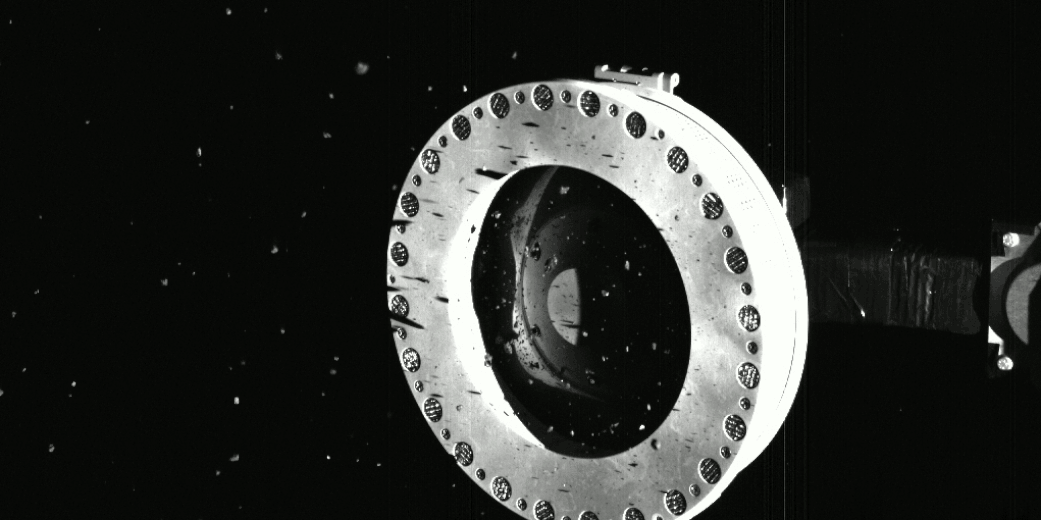OSIRIS-REx is leaking asteroid samples due to jammed lid
By David Szondy
October 23, 2020
T

Images confirmed that the sampler head had collected an abundance of material and was leaking
NASA
V
Images returned by NASA's OSIRIS-REx asteroid explorer have confirmed that the spacecraft's sample collector head is slowly leaking some of the material it gathered from the surface of the asteroid Bennu on October 20, 2020.
When OSIRIS-REx's Touch-And-Go Sample Acquisition Mechanism (TAGSAM) head made contact with Bennu, its one job was to release a blast of nitrogen gas to stir up soil and small rocks, which it would then collect. Since this autonomous operation was completed and the spacecraft withdrew to a safe distance from the asteroid, NASA scientists have been examining images sent back by cameras to determine if the exercise was successful.
It turned out to be a case of good and bad news. The good news is that the TAGSAM head worked perfectly at just the right angle to the asteroid's surface, collecting material to a depth of several centimeters.
The bad news is that, while the apparatus did collect enough material beyond the minimum of 2 oz (60 g) to meet one of the main mission requirements, it turns out that some larger pieces of rock jammed open the mylar flap that forms the lid of the sampler, and soil is slowly leaking out.

Asteroid sample material slowly leaking from the sampler head
NASA
To prevent more sample material being lost, the mission team has decided to alter the scheduled program to avoid any movement of the spacecraft. Instead of carrying out Saturday's Sample Mass Measurement activity and a course correction burn on Friday, the team will now concentrate on shifting the sample to the Sample Return Capsule (SRC) for safekeeping on the return to Earth.
Meanwhile, the spacecraft is reported to be in good health.
"Bennu continues to surprise us with great science and also throwing a few curveballs," says Thomas Zurbuchen, NASA’s associate administrator for science. "And although we may have to move more quickly to stow the sample, it’s not a bad problem to have. We are so excited to see what appears to be an abundant sample that will inspire science for decades beyond this historic moment."
Source: NASA
No comments:
Post a Comment